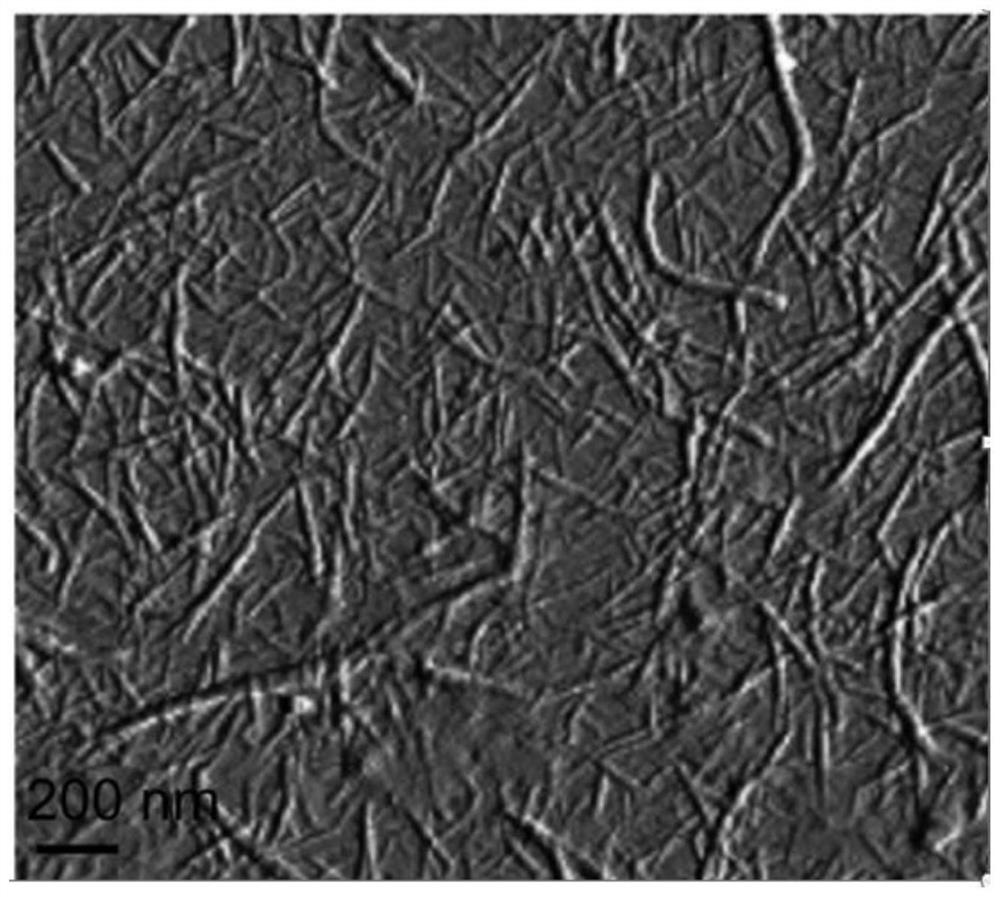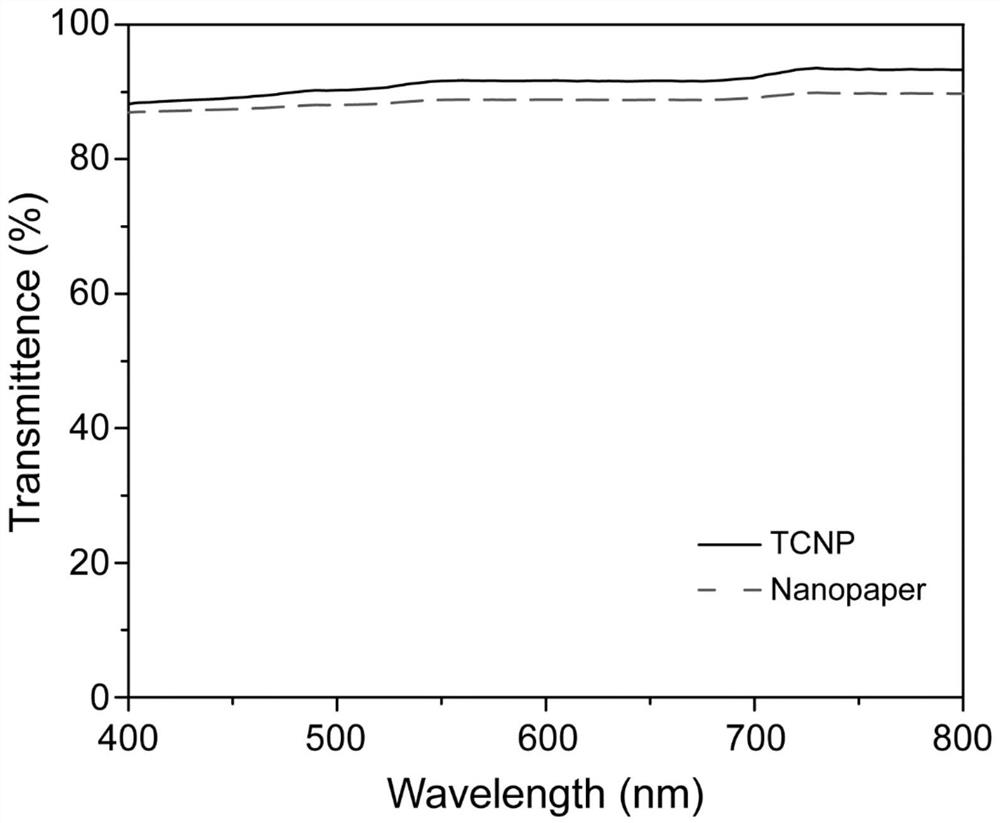High-transparency conductive nano paper as well as convenient preparation method and application thereof
A transparent conductive, nano-paper technology, applied in the field of conductive paper, can solve the problems of limited application of conductive paper, high energy consumption, discount of paper conductivity, etc., to achieve excellent bending resistance and electrical stability, fast photopolymerization, good The effect of tensile properties
- Summary
- Abstract
- Description
- Claims
- Application Information
AI Technical Summary
Problems solved by technology
Method used
Image
Examples
Embodiment 1
[0038] A highly transparent conductive nano paper comprises nano cellulose paper and a transparent conductive ink layer covered on the nano cellulose paper, and the transparent conductive ink layer is prepared by curing a polymerizable deep eutectic solvent and a crosslinking agent.
[0039] The preparation process of described highly transparent conductive nano paper is as follows:
[0040] (1) Preparation of transparent conductive ink: Mix choline chloride and acrylic acid at a molar ratio of 1:2, heat and stir the mixture in a closed flask at 90°C for about 4 hours until a uniform clear and transparent solution PDES is formed, and then Crosslinking agent polyethylene glycol diacrylate and photoinitiator 2-hydroxyl-4'-(2-hydroxyethoxy)-2-methylpropiophenone are added in PDES, the addition of crosslinking agent and photoinitiator Both are 1wt.% of the total mass of PDES, and the PDES conductive ink can be prepared after ultrasonication for 10 minutes.
[0041] (2) Preparatio...
Embodiment 2
[0052] A highly transparent conductive nano paper comprises nano cellulose paper and a transparent conductive ink layer covered on the nano cellulose paper, and the transparent conductive ink layer is prepared by curing a polymerizable deep eutectic solvent and a crosslinking agent.
[0053] The preparation process of the nanocellulose paper described in this example is basically the same as that of Example 1, the difference is that the polymerizable deep eutectic solvent of this example is composed of choline chloride and methacrylic acid at a mass ratio of 1:1 at 90°C The reaction was obtained in 4h.
Embodiment 3
[0055] A highly transparent conductive nano paper comprises nano cellulose paper and a transparent conductive ink layer covered on the nano cellulose paper, and the transparent conductive ink layer is prepared by curing a polymerizable deep eutectic solvent and a crosslinking agent.
[0056] The preparation process of nanocellulose paper described in this example is basically the same as that of Example 1, the difference is that the polymerizable deep eutectic solvent of this example is reacted at 90°C by anhydrous betaine and crotonic acid at a mass ratio of 1:1.5 4h to get.
PUM
| Property | Measurement | Unit |
|---|---|---|
| diameter | aaaaa | aaaaa |
| Basis weight | aaaaa | aaaaa |
| thickness | aaaaa | aaaaa |
Abstract
Description
Claims
Application Information
 Login to View More
Login to View More - R&D
- Intellectual Property
- Life Sciences
- Materials
- Tech Scout
- Unparalleled Data Quality
- Higher Quality Content
- 60% Fewer Hallucinations
Browse by: Latest US Patents, China's latest patents, Technical Efficacy Thesaurus, Application Domain, Technology Topic, Popular Technical Reports.
© 2025 PatSnap. All rights reserved.Legal|Privacy policy|Modern Slavery Act Transparency Statement|Sitemap|About US| Contact US: help@patsnap.com



